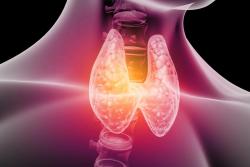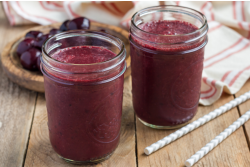Today, there is an abundant amount of information about different diets and healthy eating, yet many of us are still confused about what to do to stay healthy. If you’ve followed a dietary plan before, you may be familiar with the concept of monitoring your intake of carbohydrates, fats or proteins. Perhaps you’re training for a marathon and needing to increase your protein consumption to increase muscle mass, or your doctor told you to eat fewer saturated fats because of high blood pressure, or maybe you’ve gone low-carb or ‘keto’ in a quest to lose weight… Whatever it is, it is likely that you’re missing out on a very important nutrient…. Statistics show that in the Western populations, the majority of people don’t eat enough of it. Low intake is linked with obesity, cardiovascular disease and IBS. What are we talking about?
Fibre, of course! Arguably the most under-valued, and at the same time the most health-promoting food group. Increasing your intake of fibre, especially prebiotic fibre, should be at the top of your list if you want to improve your health!
Dietary fibre is found in plants and represents a range of carbohydrates that are indigestible by human enzymes. They go through the gastrointestinal tract mostly intact, until they reach the colon where they’re either fermented by gut bacteria or used to bulk the stool.1 The form of fibre that can be utilised by the gut microorganisms for fuel and growth is defined as ‘prebiotic’.2 There are two main types of fibre:
- Soluble fibre such as pectin, found in pears, apples, and prebiotics like inulin, galactooligosaccharides (GOS) and fructooligosaccharides (F.O.S.), are able to dissolve in water and form a gel-like substance, softening stools.
- Insoluble fibre like cellulose, predominant in fruit, vegetables and whole grains, which adds bulk to stools, supporting bowel movements.
Although these foods are easily available, most adults consume only about 18g of fibre per day, which is far less than the government recommended 30g. The trends are similar in children.3
In comparison, the Hadza tribe in Tanzania eat up to 150g a day.4 While it may not be necessary to aim for such a high amount, even small increments could have profound impacts on your health!
Here are 5 key benefits of increasing your fibre intake:
1. Improved digestion ( IBS, constipation and ‘leaky gut’)
Improving human health through modulation of the intestinal microbiome is an evolving holistic approach to wellness. Interestingly, the gut microbial diversity of people who ate more than 30 different plant types per week was greater than those who ate 10 or fewer, according to the American Gut Project.5 This may be due to the role of fibre such as F.O.S. and resistant starch in stimulating the growth of beneficial bacteria like Lactobacillus and Bifidobacterium, while simultaneously suppressing the colonies of potentially pathogenic species like Escherichia coli 6 and Clostridia.7,8 Besides balancing the level of good and bad bacteria, thus improving ‘gut dysbiosis’, the daily intake of F.O.S. at 10g could also alleviate constipation by increasing faecal output,9 moisture,10 and mass.
Furthermore, prebiotics may play a role in the management of autoimmune diseases like Hashimoto’s thyroiditis, which are on the rise today. According to traditional beliefs, they develop as a result of a complex interplay between genes and environmental triggers. However, new evidence suggests that there is a third element involved, known as ‘leaky gut’ or ‘increased intestinal permeability’, which is characterised by poor integrity of the gastrointestinal wall, allowing antigens to penetrate and stimulate an immune response.11 Interestingly, consumption of inulin has been shown to improve the epithelium by modulating the levels of ‘zonulin’,12 a protein involved in leaky gut, and promoting the production of butyric acid,13 short chain fatty acid (SCFA) providing fuel for gut cells. As the latter may become inflamed because of various dietary and lifestyle factors, resulting in increased intestinal permeability, supplementation of GOS (galactooligosaccharides) could be a suitable nutritional strategy due to its ability to attenuate inflammation.14
2. Balanced hormones
Common disorders such as premenstrual syndrome (PMS),15 fibroids,16 polycystic ovary syndrome (PCOS), endometriosis,17 benign prostatic hyperplasia (BPH)18 and infertility, are associated with ‘oestrogen dominance’, a condition driven by various physiological and environmental factors, one of which is disturbed gut microflora. As gut bacteria play a crucial role in the excretion of metabolised oestrogens, any imbalance such as higher colonies of Bacteroides, Eubacterium, and Clostridium, can lead to an increased production of beta-glucuronidase, an enzyme able to detach oestrogens from their metabolites, making them free for recirculation in the blood. Clinical studies show that the intake of inulin and GOS, at 15g/day each, can lower beta-glucuronidase levels, highlighting the role of prebiotics in nutritional therapy for hormonal conditions.19
3. Strong and resilient immune system
Prebiotics, in particular arabinogalactans and GOS (galactooligosaccharides), can strengthen the innate immune system20,21 - our first line of defense against pathogens, through modulating the microbiome, reducing inflammation,22 and improving the response to antigens by immune cells (e.g. natural killer [NK] cells, macrophages).23 These properties make arabinogalactans, specifically from the Larch tree and at a dose of 4.5g/day, a suitable therapeutic agent for the management of common cold by reducing its incidence and promoting a quicker and stronger immune response against this infection.24,25
The adaptive pillar of the immune system, aimed at targeting specific threats to the body by producing antibodies, is also enhanced by the consumption of arabinogalactans. For instance, 1.5g and 4.5g of daily supplementation of this prebiotic can produce a significant increase in IgG antibody response by immune cells (B and T cells) to the tetanus vaccine26 and Streptococcus pneumoniae,27 respectively. One recently proposed hypothesis states that this low level of stimulation to the adaptive immune system may contribute to the ability of arabinogalactans to prime the immune system, for example by keeping an array of antibodies in place, to help make it more responsive to future exposure to antigens, allowing faster recovery from bacterial and/or viral infections.28
4. Healthy cholesterol and blood glucose levels
Consuming F.O.S. in combination with probiotics (Lactobacillus salivarius) has been shown to cause a significant reduction in total cholesterol, low-density lipoprotein (LDL) cholesterol, triglycerides and inflammatory markers (e.g. C-reactive protein), while elevating the levels ofhigh-density lipoprotein (HDL) cholesterol.29
Adding fibre-rich foods can lower the glycemic index of meals, which helps preventing an initial sharp increase in blood sugar levels, followed soon by a crash.30 Research shows that a high intake of resistant starch at 48-66g/day can significantly attenuate insulin and glucose responses after a meal,31 thus improving insulin sensitivity.32 This effect of fibre could be further supported with the consumption of inulin due to its ability to reduce the accumulation of molecules like advanced glycation end products (AGEs), known to contribute to the development of vascular and metabolic complications in diabetes.33 The risk of developing type 2 diabetes can be further reduced with inulin (at 30g/day) by making the liver less fatty and improving non-alcoholic fatty liver disease (NAFLD).34
5. Healthy weight management and effective weight loss
Once you start eating more fibre, you will be already supporting your blood sugar and insulin levels. This is important if you are on a weight management programme, as excess glucose tends to be converted to fats and stored in fatty tissue, rather than being used for energy. The modulation of blood glucose could be associated with the capacity of inulin-type fructans to promote the secretion of hormones involved in appetite regulation (e.g. ghrelin), lowering hunger and further food intake.35 Improved satiety was also observed with consumption of prunes.36
Furthermore, obesity has been associated with disturbed gut microflora, especially a reduction in Bacteroidetes and an increase in Firmicutes.37 One study found that supplementation with prebiotics in obese women lead to modest changes in their metabolism and reduced fat mass through modulation of the microbiome.38
Interestingly, regular intake of a specific type of fibre called acacia gum can lead to a significant reduction in Body Mass Index (BMI) and body fat percentage, which implicates its role in the management of obesity.39 This likely occurs through the ability of fermentable carbohydrates to improve glucose tolerance and fat burning, for example.
So how can you ensure you are getting enough fibre?
- Increase your daily intake of vegetables and fruits up to at least 7 and 3 portions, respectively.
- Aim for ‘eating the rainbow’ by including as many as possible different colourful plants.
- Consider consumption of foods such as Jerusalem artichoke, banana, asparagus, garlic, onions, and chicory, all rich in F.O.S. and inulin, as well as leeks, carrots, radish, pears, tomato, and turmeric, providing arabinogalactans.
- Eat whole vegetables: broccoli stalks, cauliflower leaves, carrot tops.They are rich in nutrients and can help reduce waste, a win-win!
- Swap refined grains for whole grains (e.g. brown instead of white rice).
- Include legumes and beans into your diet as these are a good source of GOS (galactooligosaccharides) (e.g. peas) and resistant starch, abundant in cooked and cooled potatoes.
- As healthy snacks, choose nuts and seeds or berries.
- Consider supplementation with a wide range of prebiotics in order to meet or even go beyond the daily recommended dose of 30g. Adding these into your smoothie or porridge could be already a great start towards a higher fibre intake.
If you are prone to symptoms of bloating and gas or have Irritable Bowel Syndrome (IBS) or Small Intestinal Bacterial Overgrowth (SIBO), you may have been told to avoid fibre-rich foods. This frankly goes against the diet which we have survived and thrived off over the course of human evolution. The trick is to start low and slow, introducing fibre gradually to allow your gut to get used to it over time!
Are you ready for a challenge? Start increasing your intake of fibre today and reap the long-term benefits!
Got a question?
The brand you can talk to:
We have a team of Nutritionists at the end of our advice line, open to you, for product support and advice (5 days a week). 0121 433 8702 or clinicalnutrition@biocare.co.uk
Or head to our advice page where you can find Healthnotes.
Not registered for an account with BioCare®?
You can register now to receive up to date news, product information and exclusive offers whether you are a consumer, practitioner or retailer.
References
1 Lupton JR. Microbial degradation products influence colon cancer risk: the butyrate controversy. J Nutr. 2004 Feb;134(2):479-82.
2 Gibson GR, Hutkins R, Sanders ME, Prescott SL, Reimer RA, Salminen SJ, Scott K, Stanton C, Swanson KS, Cani PD, Verbeke K, Reid G. Expert consensus document: The International Scientific Association for Probiotics and Prebiotics (ISAPP) consensus statement on the definition and scope of prebiotics. Nat Rev Gastroenterol Hepatol. 2017 Aug;14(8):491-502.
3 Public Health England. Government Dietary Recommendations Government recommendations for energy and nutrients for males and females aged 1 – 18 years and 19 years. 2015 available at: https://assets.publishing.service.gov.uk/governmen...
4 Leach JD. Rewild. A Collection of Essays from the Human Food Project. CreateSpace Independent Publishing Platform. 2015.
5 McDonald D et al. American Gut: an Open Platform for Citizen Science Microbiome Research. mSystems 3: e00031-18. Available at: https://msystems.asm.org/content/3/3/e00031-18
6 Rajkumar et al. Effect of Probiotic Lactobacillus salivarius UBL S22 and Prebiotic Fructo-oligosaccharide on Serum Lipids, Inflammatory Markers, Insulin Sensitivity, and Gut Bacteria in Healthy Young Volunteers: A Randomized Controlled Single-Blind Pilot Study. J Cardiovasc Pharmacol Ther. 2015 May; 20 (3): 289-98.
7 Michael J Keenan et al. Role of Resistant Starch in Improving Gut Health, Adiposity and Insulin Resistance. American Society of Nutrition. Adv. Nutri. 6: 198-205. 2015.
8 Keenan MJ, Janes M, Robert J, Martin RJ, Raggio AM, McCutcheon KL, Pelkman C, Tulley R, Goita M, Durham HA, et al. Resistant starch from high amylose maize (HAM-RS2) reduces body fat and increases gut bacteria in ovariectomized (OVX) rats. Obesity (Silver Spring) 2013;21:981–4.
9 Chen et al. Effects of fructooligosaccharide on bowel function and indicators of nutritional statutes in constipated elderly men. Nutrition Research. 2000; 20 (12): 1725-33.
10 Van Dokkum et al. Effect of nondigestible oligosaccharides on large bowel functions, blood lipid on centrations and glucose absorption in young healthy male subjects. Eur J Clin Nutr. 1999; 53: 1-7.
11 Fasano A, Shea-Donohue T. Mechanisms of disease: the role of intestinal barrier function in the pathogenesis of gastrointestinal autoimmune diseases. Nat Clin Pract Gastroenterol Hepatol. 2005 Sep;2(9):416-22.
12 Russo et al. Inulin-enriched pasta improves intestinal permeability and modifies the circulating levels of zonulin and glucagon-like peptide 2 in healthy young volunteers. Nutr. Res. 2012 Dec; 32 (12): 940-6.
13 Scott et al. Prebiotic stimulation of human colonic butyrate-producing bacteria and Bifidobacteria in vitro. FEMS Microbiol Ecol. 2014 Jan; 87 (1): 30-40.
14 Newberg et al. Human Milk Oligosaccharides and Synthetic Galactosyloligosaccharides Contain 3’-. 4’-, and 6’-Galactosyllactose and Attenuate Inflammation in Human T84, NCM-460, and H4 cells and Intestinal Tissue Ex Vivo. J Nutrition. 2016 Feb; 146(2):358-67.
15 Schmidt PJ et al. Differential behavioural effects of gonadal steroids in women with and in those without premenstrual syndrome. N Engl J Med. 1998; 338(4):209-16.
16 Bulun SE. Uterine Fibroids. N Engl J Med. 2013; 369(14): 1344-55.
17 Vercellini P et al. Endometriosis: pathogenesis and treatment. Nat Rev Endocrinol. 2014; 10(5): 261-75.
18 Nicholson TM, Ricke WA. Androgens and estrogens in benign prostatic hyperplasia: past, present and future. Differentiation. 2011;82(4-5):184–199.
19 Van Dokkum et al. Effect of nondigestible oligosaccharides on large-bowel functions, blood lipid concentrations and glucose absorption in young healthy male subjects. Eur J Clin Nutr. 1999 Jan; 53 (1): 1-7.
20 Dion, C, Chappuis, E, Ripoll, C. Does larch arabinogalactan enhance immune function? A review of mechanistic and clinical trials. Nutr Metab. (London). 2016 Apr 12; 13-28.
21 Newberg et al. Human Milk Oligosaccharides and Synthetic Galactosyloligosaccharides Contain 3’-. 4’-, and 6’-Galactosyllactose and Attenuate Inflammation in Human T84, NCM-460, and H4 cells and Intestinal Tissue Ex Vivo. J Nutrition. 2016 Feb; 146(2):358-67.
22 Hauer and Anderer. Mechanism of stimulation of human natural killer cytotoxicity by arabinogalactan from Larix occidentalis. Cancer Immunol Immunother. 1993; 36 (4): 237-44.
23 Choi et al. Immunomodulating activity of arabinogalactan and fucoidan in vitro. J Med Food. 2005 Winter; 8 (4): 446-53.
24 Riede, L., Grube, B., Gruenwald, J. Larch arabinogalactan effects on reducing incidence of upper respiratory infections. Curr Med Res Opin. 2013 Mar; 29 (3): 251-8.
25 Dion, C, Chappuis, E, Ripoll, C. Does larch arabinogalactan enhance immune function? A review of mechanistic and clinical trials. Nutr Metab. (London). 2016 Apr 12; 13-28.
26 Udani, J.K. Immunomodulatory effects of ResistAid: A randomised, double-blind, placebo-controlled, multidose study. J Am Coll Nutr. 2013; 32 (5): 331-8.
27 Udani, et al. Proprietary arabinogalactan extract increases antibody response to the pneumonia vaccine: a randomised, double-blind, placebo-controlled pilot study in healthy volunteers. Nutr J. 2010 Aug 26; 9: 32.
28 Dion, C, Chappuis, E, Ripoll, C. Does larch arabinogalactan enhance immune function? A review of mechanistic and clinical trials. Nutr Metab. (London). 2016 Apr 12; 13-28.
29 Rajkumar et al. Effect of Probiotic Lactobacillus salivarius UBL S22 and Prebiotic Fructo-oligosaccharide on Serum Lipids, Inflammatory Markers, Insulin Sensitivity, and Gut Bacteria in Healthy Young Volunteers: A Randomized Controlled Single-Blind Pilot Study. J Cardiovasc Pharmacol Ther. 2015 May; 20 (3): 289-98.
30 Zhou J, et al. Dietary resistant starch upregulates total GLP-1 and PYY in a sustained day-long manner through fermentation in rodents. Am J Physiol Endocrinol Metab2008;295:E1160–6.
31 Tanja V Maier et al. Impact of Dietary Resistant Starch on the Human Gut Microbiome, Metaproteome, and Metabolome. American Society fro Microbiology. 2017. 8:5, e01343-17.
32 Zhou J et al.. Dietary resistant starch upregulates total GLP-1 and PYY in a sustained day-long manner through fermentation in rodents. Am J Physiol Endocrinol Metab2008;295:E1160–6.
33 Kellow et al. Effect of dietary prebiotic supplementation on advanced glycation, insulin resistance and inflammatory biomarkers in adults with pre-diabetes: a study protocol for a double-blind placebo-controlled randomised crossover clinical trial. BMC Endocr Disord. 2014 Jul 10; 14: 55.
34 Guess et al. A randomized controlled trial: the effect of inulin on weight management and ectopic fat in subjects with prediabetes. Nutrition & Metabolism. 2015; 12: 36
35Delzenne NM, Cani PD, Daubioul C, Neyrinck AM. Impact of inulin and oligofructose on gastrointestinal peptides. Br J Nutr. 2005 Apr;93 Suppl 1:S157-61.
36 Stacewicz-Sapuntzakis M. Dried plums and their products: composition and health effects--an updated review. Crit Rev Food Sci Nutr. 2013;53(12):1277-302.
37 Ley RE, Turnbaugh PJ, Klein S, Gordon JI. Microbial ecology: human gut microbes associated with obesity. Nature. 2006 Dec 21;444(7122):1022-3.
38 Dewulf E et al.. Insight into the prebiotic concept: lessons from an exploratory, double blind intervention study with inulin-type fructans in obese women. Gut. 2012;62(8):1112–1121.
39 Babiker et al. Effects of gum Arabic ingestion on body mass index and body fat percentage in healthy adult females: two-arm randomised, placebo controlled, double-blind trial. Nutr J. 2012; 11:111.





